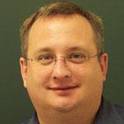
The objective of this study was to estimate direct and indirect selection potential for length of productive life and lifetime prolificacy. In order to study the direct selection potential, the heritabilities of these traits were estimated. The genetic correlations of length of productive life and lifetime prolificacy with prolificacy traits and overall leg conformation were estimated to evaluate if selection for these traits could indirectly improve measures of sow longevity. In addition, correlations between length of productive life, lifetime prolificacy, daily gain, and backfat thickness were estimated. Records were utilized from Finnish purebred Landrace (n=26,744) and Large White (n=24,007) sows born on operations that perform on-farm production tests on all females. Heritabilities were estimated using both a survival analysis procedure and a linear model. Due to computational limitations, correlations were estimated with the linear model only. Estimated length of productive life heritabilities obtained from linear model analyses were lower (0.05 to 0.10) than those obtained from survival analyses (0.16 to 0.19). This may be indicative of the superiority of survival analysis compared to linear model analysis methods when evaluating longevity or similar types of data. All the prolificacy traits were genetically correlated with length of productive life and lifetime prolificacy and the correlations were greater than 0.13. These results indicate that selection for increased number of piglets weaned in the first litter and for short first farrowing interval is beneficial for sow longevity and also for sow’s lifetime prolificacy. The genetic correlations between length of productive life and leg conformation score were also favorable (0.32 in Landrace and 0.17 in Large White). The heritabilty estimates indicate that survival analysis is likely the most appropriate method of evaluating longevity traits in swine. Because of computational problems, simultaneous analysis of linear traits and longevity is not currently possible. More research is needed to develop methods for multiple linear and survival trait analyses.
Available at: http://works.bepress.com/kenneth_stalder/132/
